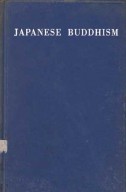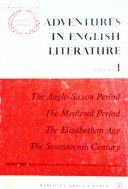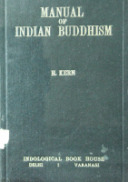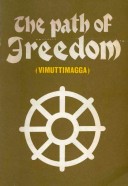Tìm Sách
Sách tiếng Anh-English >> Japanese Buddhism
Thông tin tra cứu
- Tên sách : Japanese Buddhism
- Tác giả : Sir Charles Eliot
- Dịch giả :
- Ngôn ngữ : Anh
- Số trang : 449
- Nhà xuất bản : Routledge & Kegan Paul Ltd. London
- Năm xuất bản : 1959
- Phân loại : Sách tiếng Anh-English
- MCB : 12010000002878
- OPAC :
- Tóm tắt :
JAPANESE BUDDDHISM
By the late
SIR CHARLES ELIOT
P.C., G.C.M.G., GB
Sometime H.M. Ambassador at Tokyo
Japanese Buddhism is complementary to Sir Charles Eliot`s earlier work, Hinduism and Buddhism, which appeared in 1921. It may be asked what influenced him in the selection of this particular field for investigation, why his choice did not instead fall on China, Tibet, Burma, or Siam, older adherents to the faith and closer to its cradle. A partial answer is perhaps to be found in certain advantages which Japan offered for his purpose. For although in all these countries alike a vast wealth of material existed, - canonical writings, exegetical literature, and the like, - the accumulation of centuries of patient and pious toil, not in every one was it equally accessible; and in China, in fact, it was scattered over a very wide area. In Japan, however, not only was this material available in a form both compact and complete; but also, owing to the insular position of the country, to its entire immunity from invasion, and to a practical isolation from the rest of the world extending over more than two hundred years, the practices, ritual, documents, and iconography of Mahayanist Buddhism had been preserved in singular integrity. To quote the author`s own words, the Buddhism of Japan was “the lineal and recognized descendent of the creed held by Nagarjuna, Vasubandhu, and Santideva”. Moreover, its history offered phenomena of peculiar interest to the student of religion in Europe, - the conflict between Church and State, the growth of protestant sects “casting aside ritual to offer the common man salvation by faith” or preaching national or universal religion, the evolution of an Established Church lapsing finally into comfortable torpor, - to mention only a few examples. We may conjecture that these were all material factors in shaping his choice.
CONTENTS
IN PIAM MEMORIAM. By Sir Harold Parlett
BOOK I. A SURVEY OF BUDDHISM IN INDIA AND CHINA
I. THE CANONS
II. THE DOCTRINES
III. BUDDHISM IN INDIA
IV. THE PANTHEON
V. BUDDHISM IN CHINA
BOOK II. HISTORY OF JAPANESE BUDDHISM
VI. PREFATORY REMARKS
VII. INTRODUCTION OF BUDDHISM
VIII. NARA PERIOD: - THE OLDER SECTS
IX. HEIAN PERIOD: - TENDAL AND SHINGON
X. RISE OF NEW SECTS : - JODO AND SHINSHU
XI. RISE OF NEW SECTS: - NICHIREN AND ZEN
XII. THE DARK AGES
XIII. TOKUGAWA PERIOD: - CRYSTALLIUZATION OF THE CHURCH
BOOK III. THE SECTS AND THEIR DOCTRINES
XIV. TENDAI
XV. SHINGON
XVI. AMIDISM
XVII. ZEN
XVIII. NICHIREN . by G.B. SANSOM
INDEX
 Facebook
Facebook
 Google
Google
 Google+
Google+


















